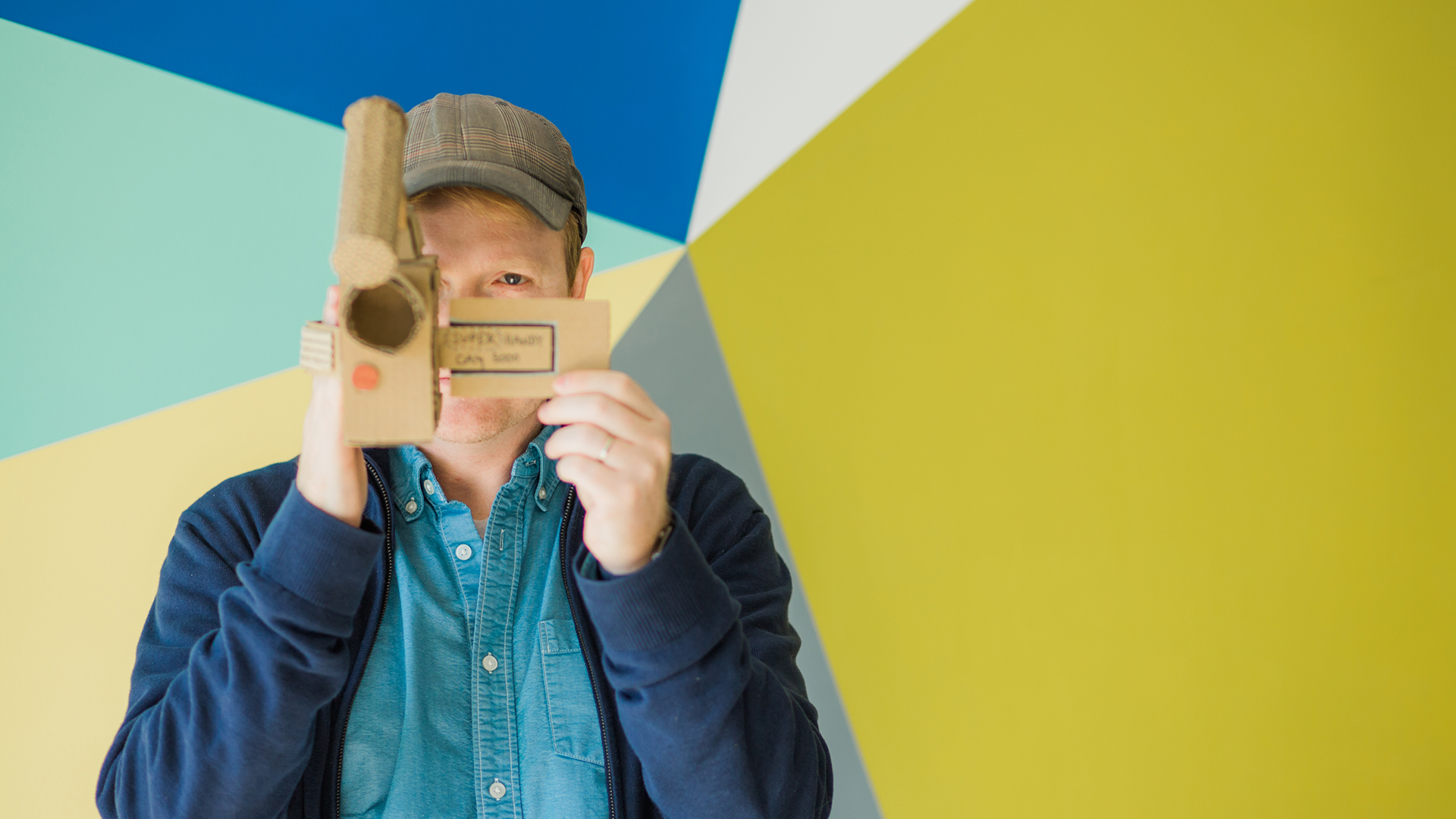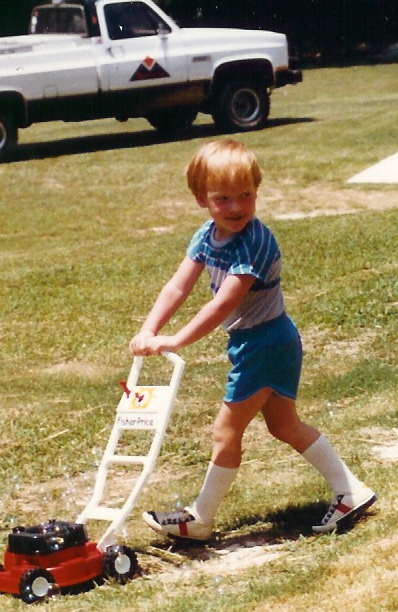
A lot of your time is spent with kids and so much of your work is geared toward young people. What were you like as a kid?
I grew up on a farm and was surrounded by nature and hard work. But I was also a very creative kid who loved to dream and loved stories and art. In many ways that thoroughly baffled my parents who were good and kind people, but for them to have an inside kid was a bit of a cause for concern. I was very imaginative and curious and full of wonder and at the same time, often painfully shy. So that tension of wanting to talk to everyone and being curious about everyone and wanting to hug everyone, but also being terrified to do so, continues to this day.
You must have a lot of tools in your toolbox then, because you seem to have overcome that fear quite a bit.
Yeah, I love anytime that I get to be with people, sharing things and learning things. But there’s always that little voice of insecurity and wondering whether I am even allowed to talk to these people, if it’s even okay for me to be at this table. So I spend a lot of time telling stories to kids, and people who used to be kids, letting them know that no matter how small they feel, they have something very big to give and that no matter how much you don’t feel like you belong at the table, you do. I tell the stories that I needed as a kid, and that I need now.
It sounds like your experience growing up really shaped the way you think about creativity as an adult.
Yeah, I think I am very interested in children and childhood because there’s something about that point in time that is pure. I’m fascinated by when you talk to somebody about who their favorite teacher was or the first book they remember reading all by themselves or something that captured their heart when they were really little and how that sticks with you. When we are young, our walls are not necessarily fully built up to defend and protect ego. It’s just our beautiful humanity. And so I find when I bring a childlikeness to a conversation, it brings people to a place of being human together.
I really started to discover this when we were working on this web project I did called Kid President. We found ourselves in settings with foreign dignitaries and big political figures feeling like, Oh, they’re so powerful and big. And yet I would ask them, “Who’s a grownup that meant a lot to you when you were a kid?” And seeing a powerful leader kind of tear up and turn into a child again talking about a grandmother, or having their eyes light up as they discuss coloring, or simple little things. It felt like hacking into some sort of server and dismantling all the other stuff that’s just in the way, that’s messy, that has been built up to protect them. We just locked in as people, person to person, weird guy from West Tennessee to leader of the United Nations, or whoever it was. You get a direct line to them as a person.
So, who was a grownup that meant a lot to you when you were a kid?
For me, it was a collection of great people that I had the gift of having in my path, whether my parents or teachers. But in this season [of life], I think a lot of my grandmother and the way that I felt such ease and joy in her presence. That’s a feeling I not only long for myself, but I want other people to feel. So I’ve been thinking about what sort of things she did that made me feel so treasured and honored. I mean, she’s an excellent cook, there’s an element of food—that kind of care. But it was mostly that she was present and had a way of seeing me that I wanted to rise up to. So I’m learning to do that with my own kids. And I’m even learning to do that in a room full of kids and in rooms where I’m speaking, trying to bring that same sort of, I see you and I’m in awe of you and I’m celebrating you and honoring you. That brings out the best in me and the people around me when I look for it.
I love that you refer to adults as former kids. Why is that important to you?
I first heard the term in a quote by famed children’s book editor Ursula Nordstrom. She said, “Well, I am a former child and I haven’t forgotten a thing.” I think the way we see each other matters because it affects how we show up for each other. If I see somebody as just who they are right now, which might be them on their worst day, or them at their most cynical, their most challenging, I’m not seeing the full sky of who they are. But when I remember that they used to be a child, it puts me in a place of recognizing how precious every person is.
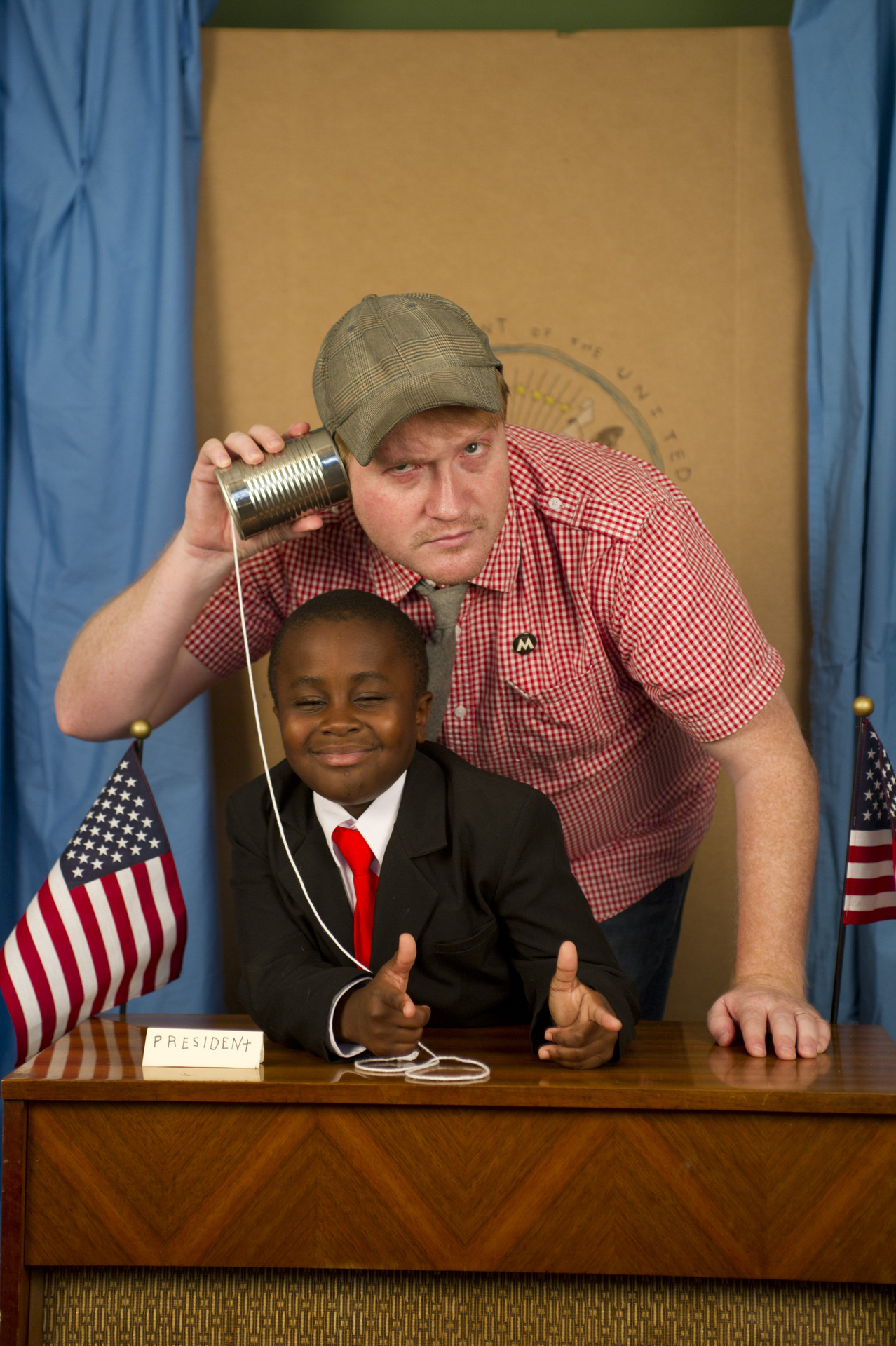
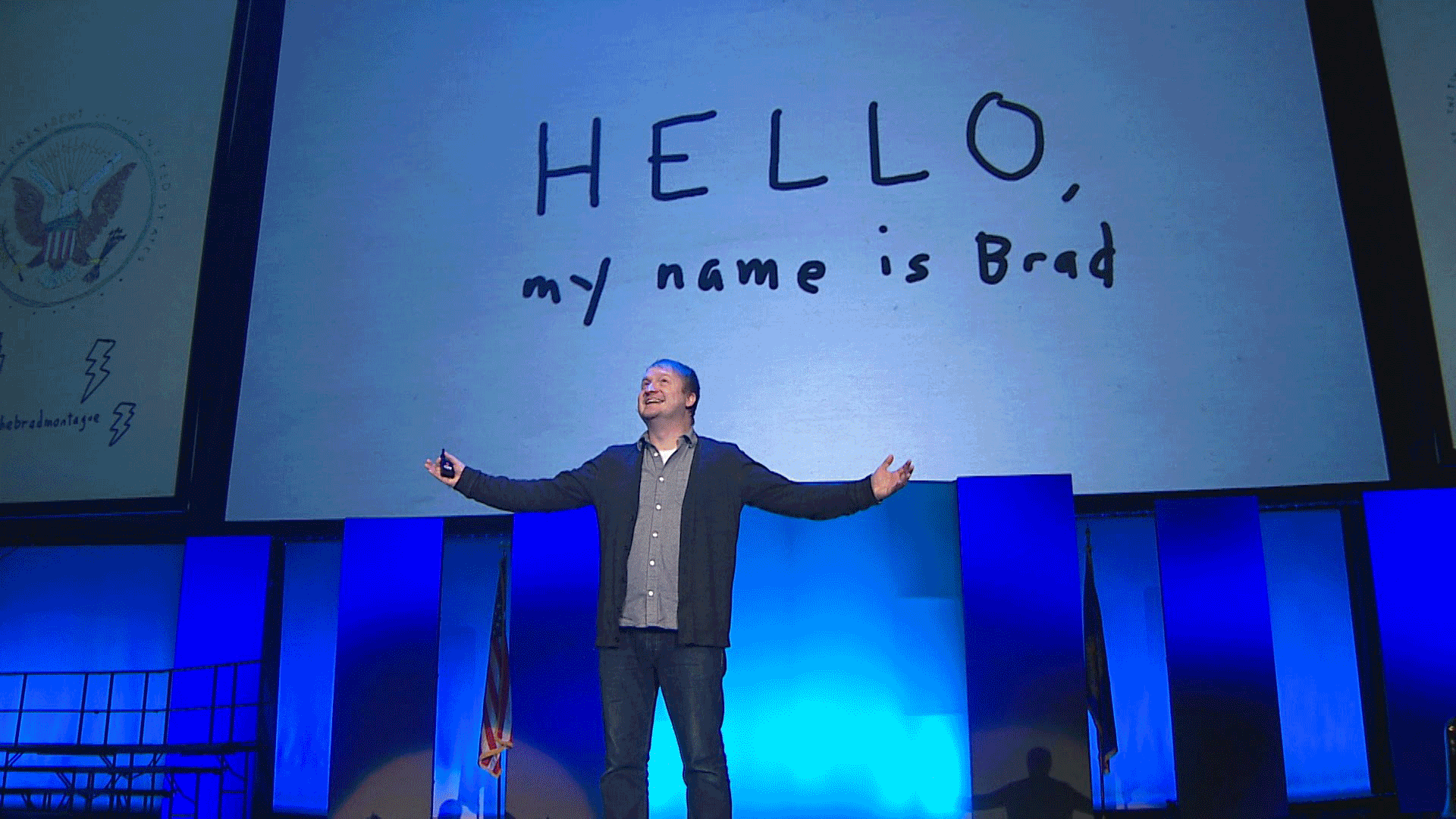
When did you realize that dreaming and making might be something you could do for a living?
I always wanted to, but I didn’t know it was possible. I grew up around honest, hard work—manual labor, which I have a massive respect for. And I thought, Well, I love to draw, I love to tell stories, I love art, but the odds of me working on cars or something are probably much higher. And there’s nothing wrong with that, but I’m quite terrible at it and don’t have a passion for it. I remember seeing a TV special where Charles Schultz was drawing Peanuts, and I had always loved Charlie Brown, Snoopy, Schroeder, Linus—the whole gang. It never quite clicked that a person was doing that. Seeing a grown man sit at a desk and draw them unlocked something in my head: Wait a minute, somebody grew up and they do that as a job. Years later I actually got to go to that desk and sit at it. In my head, I was going back to feeling that moment of, Whoa, you can do this as a vocation—to dream and invite other people to dream, to tell stories and be silly and make statements. That seems too good to be true. It seems like magic.
I studied advertising, I worked in news, and I loved that I could make things and tell stories, but it was a whole lot of learning about the kinds of stories I didn’t want to tell. So many jobs were that—This is close, but not quite what I feel like I’m supposed to be doing. I had a conversation with Ms. Joanne Rogers, who was the wife of Fred Rogers. I was talking to her about how it just seems like he always had it figured out. He always knew what he wanted to do. I just wish I had that same clarity of vision. And she just laughed this massive laugh and was like, “Oh, honey, no. He didn’t know. He had no clue.” I would later learn from my friend, Dr. Junlei Li, who also worked with Ms. Joanne Rogers and Fred Rogers, that Fred referred to his life as a “guided drift,” and that every single choice might not be the right thing, but was getting him closer to what he was meant to do. So for him, it was ministry, and then it was television. Then it was, Hang on, what if I blend these and I’m working with children? And he was uniquely prepared for that. I still feel that I have not quite landed on exactly what I’m supposed to do when I grow up, but every single project gets me a little bit closer.
Guided drift, that’s such an evocative phrase.
Yes. It sounds a whole lot better than “aimless wandering” or “hopeless existential panic” or whatever you normally feel in your 20s, 30s—to reframe it as there’s some sort of ultimate purpose for it. In any creator, artist, or just person who I have great respect for, I find that they’ve had a journey that wasn’t necessarily so linear and to learn about their mistakes or their false starts or those places where they thought this would be the thing, but it wasn’t the thing, it really encourages me. [laughs] It makes me realize that they are so incredible in the spot they’re in now, because they’ve been unremarkable in many other places, and they’ve found a way to grow from those, and they’re helping other people grow because of where they are now.
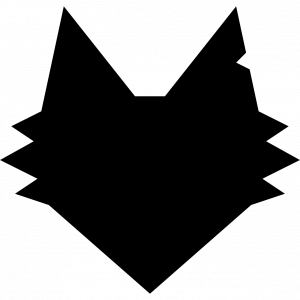
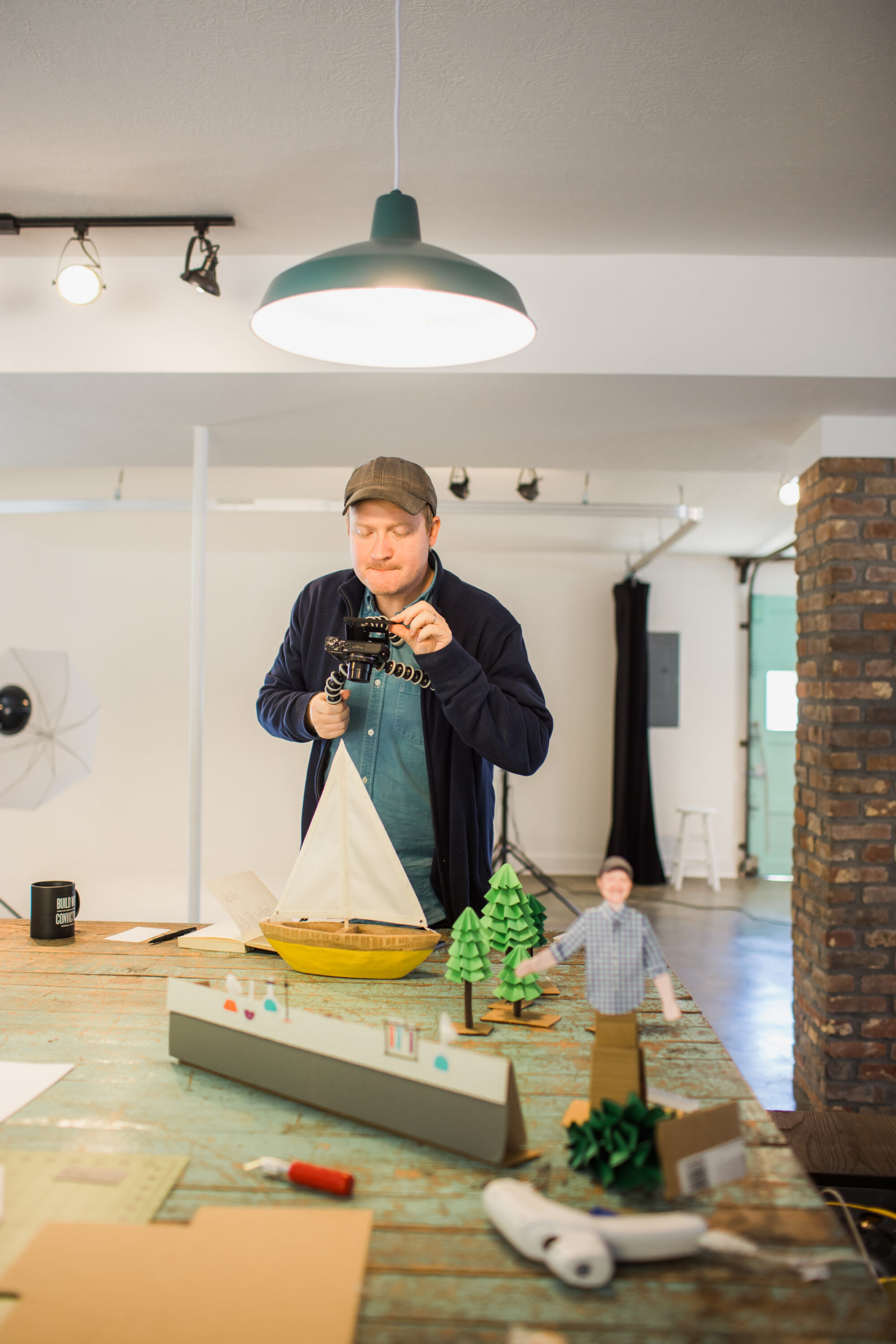
Yes! We like to dig into those experiences of uncertainty. What’s been your biggest moment of creative discontent and what came out of it?
Early on in news, I had this feeling of Whoa, cameras! Oh, wow editing! I’d always wanted to know how it works. It was a bit of a honeymoon phase of, Maybe this is the thing. Also, I saw it as an opportunity to serve. I thought, Oh, I could tell stories of our community and people. Because I’ve always believed that the stories we tell can create the world we live in. There was a moment when there had been an accident around the block from the newsroom, they asked me to go document it. So I go out with this camera and I was able to get what I felt like were really raw images that communicated the story in a visual way that struck you as a viewer, these layered images. It wasn’t until I got back to the edit bay and I’m cutting the footage together for the six o’clock news that I see in the background a person sitting on the sidewalk crouched up, and they were obviously crying. And I hadn’t seen it when I was there in person. I realized how disconnected I had become from the drama of that moment, the personal anguish another person was going through. Instead of assisting them, I just captured it and didn’t even notice.
That was a moment when the shiny lights and excitement of working in news unraveled because I realized I don’t want to become that kind of storyteller. I don’t want to lose my humanity here. Advertising was telling other people’s stories. It was learning how to connect things with people, but that’s storyselling. And I wanted storytelling. I began seeking out ways I could be fully present, but also have a camera between me and the moment. It wasn’t until I started to create things on YouTube. The act of even creating the videos was an interactive form of play and connection between myself and my young brother-in-law. It was me being present with him, and it was a way of creating a space where we can have quality time together and then have this artifact at the end that we share. That was a joy, and it got me closer.
But the real moment of seeing that this could lead somewhere really special was, we did an episode [of Kid President] where we threw a parade for a postal worker, Dana, in our town. She’s just incredible. She knew my kids’ names, she knows my favorite stamps, she knew I liked Peanuts, she knew everything about everybody in town. Going to see her at the post office was like going to see Michael Jordan play basketball or seeing Mozart play. She was an artist in her spot. So we threw a parade for her, filmed it, and shared it. Within a few weeks, I saw hundreds of people throwing parades in different parts of the country. One parade is cool, but a parade that sparks more parades is even cooler. It was this massive reminder to me that the stories we tell can create the world we live in, so we’ve got to tell really good ones. That was a moment of, Oh, it works! Then came the pressure of, Oh no, it works. [laughs] I’ve found that to be a winning formula to create a circumstance in which I am fully present. And it allows everybody else around to become fully present, whether it’s a parade or any other sort of experiential thing. If you can properly share that experience and the feelings and emotions, it invites other people to do the same wherever they are. And I’m really hooked.
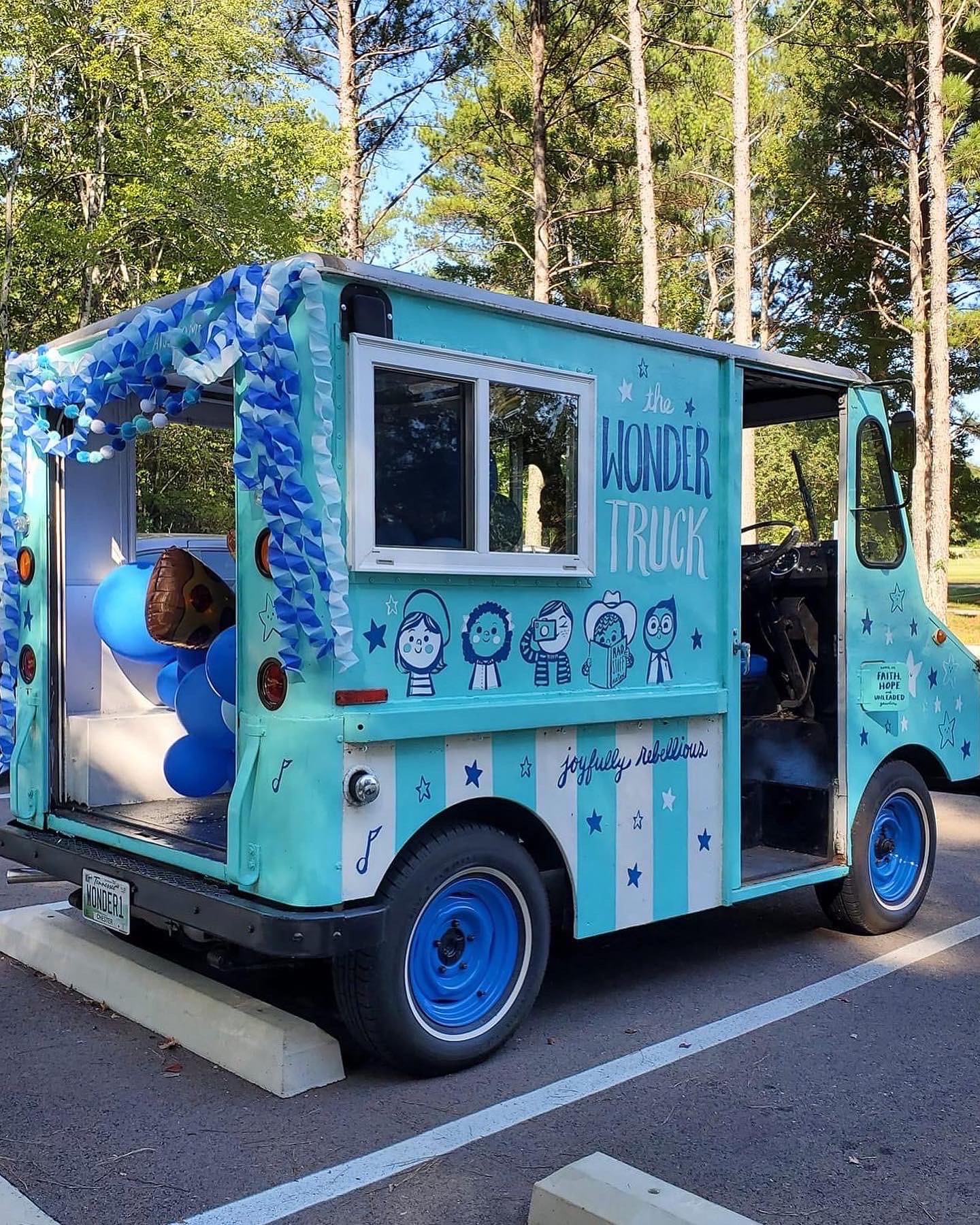
What does a typical day look like for you? Do you have a typical day?
One of the things I really love about the work I do is that no day looks the same. It is also one of the things I do not like. One day it’s drawing rabbits for a picture book and struggling to figure out, What kinds of hands would a rabbit have? And should I worry about that or just put their hands in their pockets the whole book? That’s what I’ll do. And then another day I get to be with students in a school, or we’re creating some experience—we have this ice cream truck, the Wonder Truck, and we use it as a vehicle to go to the park and tell stories and share some sort of invitation to wonder. So every day can be a little different, but I’m learning to remind myself that I asked for this, that I like this: Remember Brad, you wanted to do this. This is a good thing.
You are such a prolific creative, you dabble in so many mediums and are always putting new things out into the world. How do you consistently find that inspiration? Does it come naturally or is it a practice you cultivate?
Robert Frost said something along the lines of, “Every poem begins as a lump in your throat.” And I love that so much because sometimes there are things that we need to express so much that they feel like a lump in the throat. It’s less like, Ah, I’ve got to make this beautiful thing. And more like, I’ve got this burp I just have to let out. [laughs] It pains me, it hurts. I’ve got to express this. And I’ve had to have those things because I am so insecure about my own abilities as an illustrator, as a communicator, as whatever. And so my desire to communicate the idea has to surpass my insecurities about doing so. Wanting so badly for kids and former kids to feel belonging, that’s so important to me that, okay, I can’t draw horses. I can’t draw hands, but dang it, I just got to make this thing. It’s a burp that’s got to come out. It’s a lump in the throat. And I’ve found that chasing that has not had an end. Operating from a place of love has been the place of deepest inspiration.
And I wish I had realized sooner that I could do these things. Once Kid President began to connect with people, I made a promise to myself: I would make something every day, whether it was a video or a poem or a drawing. I would just write every day and stop being so precious about it. Because I made things all the time, I just didn’t share them. I thought it was either too small or too insignificant, too bad, too whatever. I was keeping all those lumps in my throat and it hurt. So I make it a practice to be in the habit of making daily. And sometimes people see them and sometimes they don’t, but it always matters.
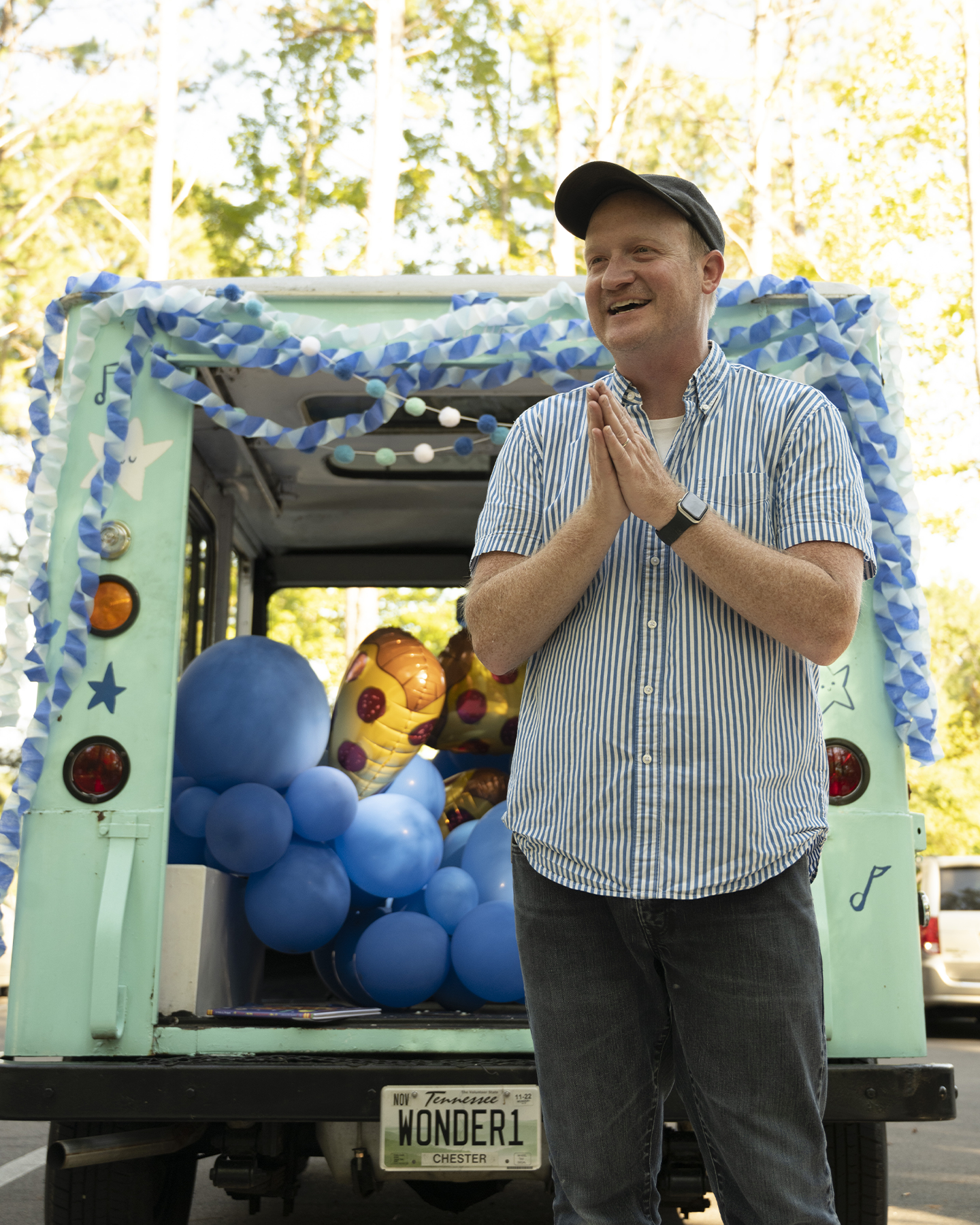
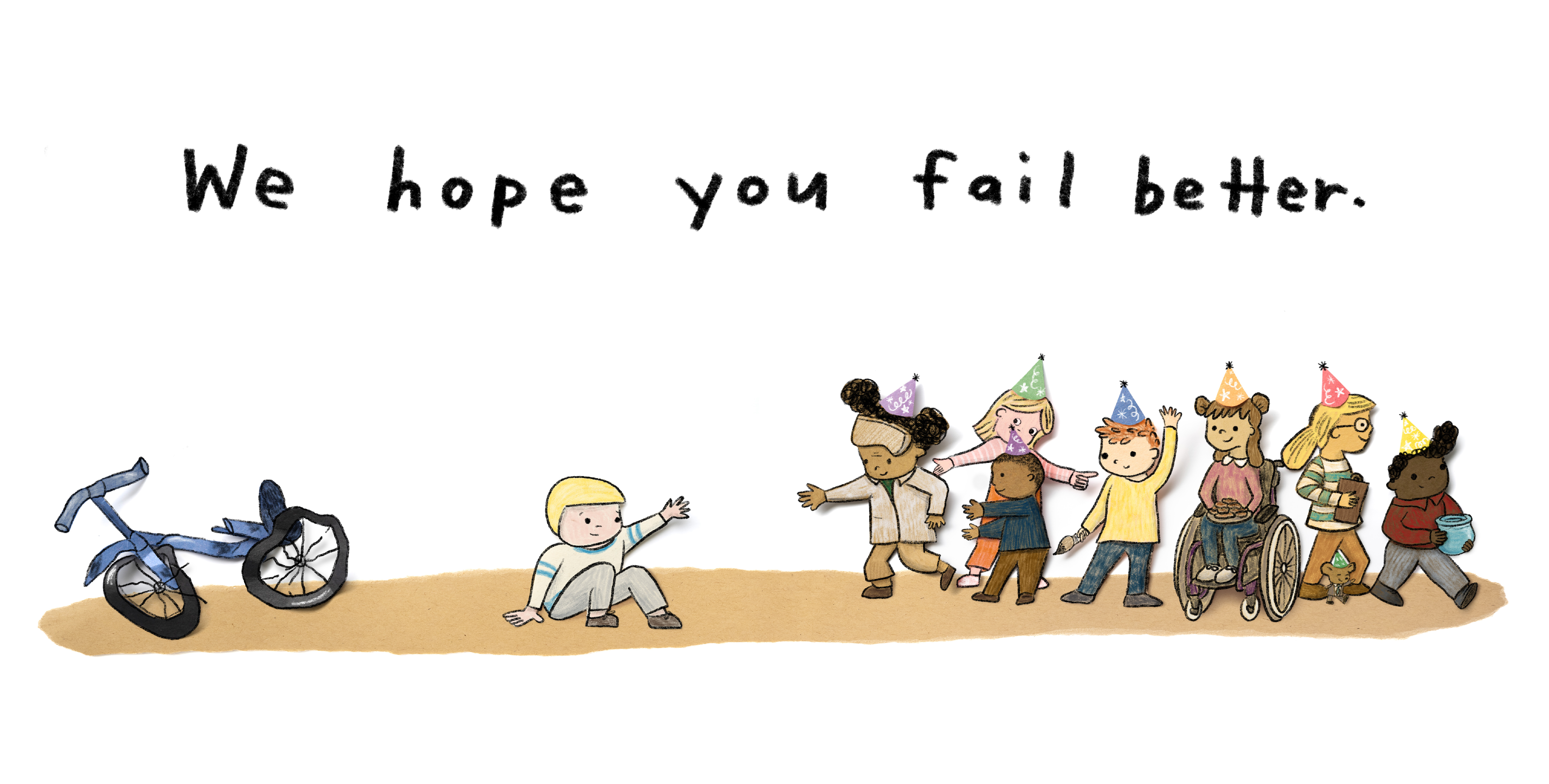
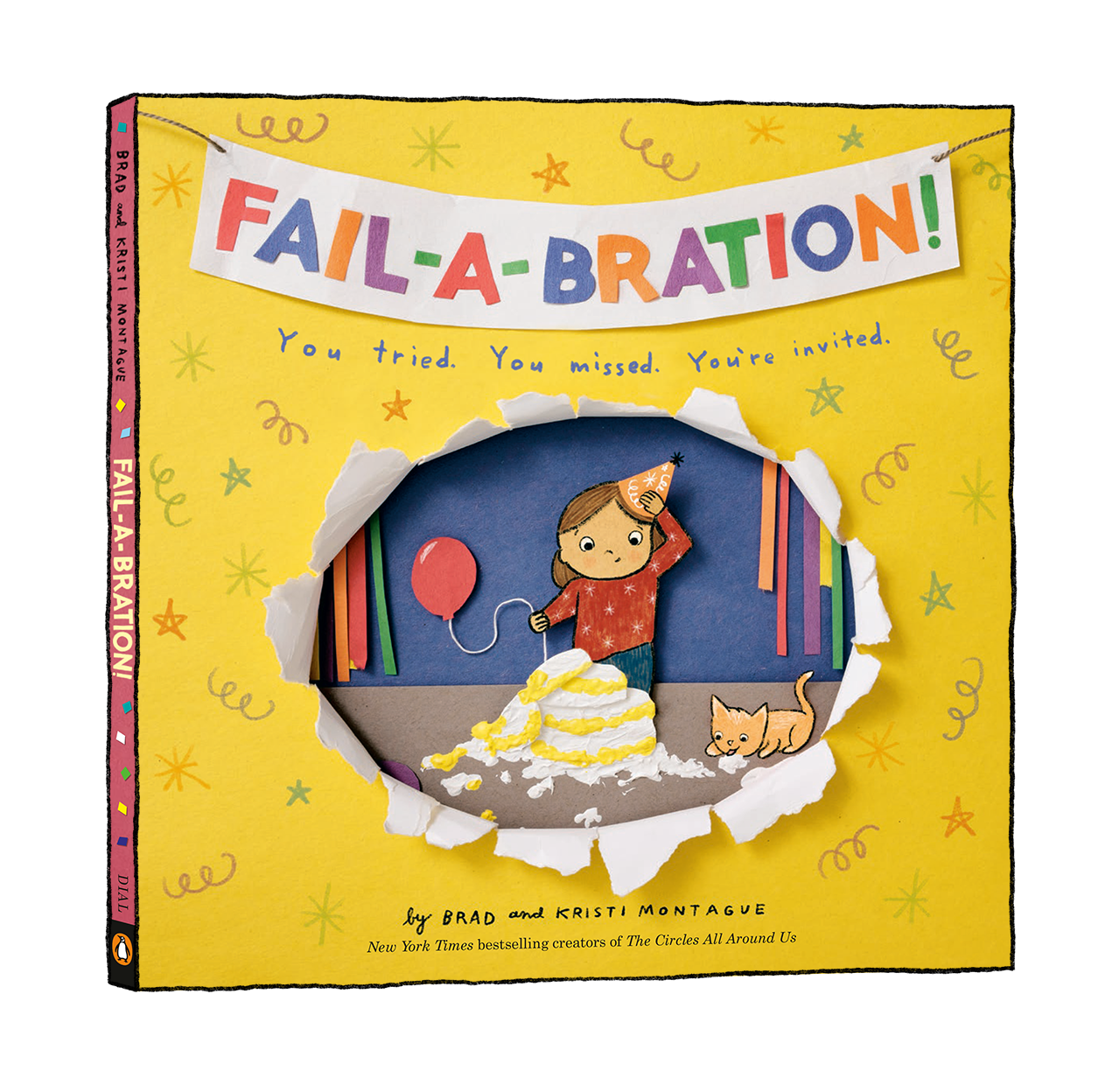
Your newest picture book is called Fail-A-Bration, and it’s about reframing the story around our mistakes or screw ups. Was there a particular failure that inspired the original Fail-A-Bration?
It started as a silly idea of wanting to do an event, but lowering the stakes so that it was purposely bad. This was shortly after the pandemic, we were just beginning to get people together. So the idea was, let me invite some of my most accomplished friends—I mean, they were New York Times best sellers, or they’ve built million-dollar businesses, they’ve been in films—and have them share stories on stage. The catch though is they weren’t allowed to share anything good they’ve done. Like a TED Talk, but terrible: you are going to tell a story of a fiasco, a mess up, a mistake, and the contract with the audience is that they will give you a standing ovation at the end. I thought it would just be funny, but instead it was profound. The immediate reaction from the audience and the storytellers was one of gratitude and awe. The room became connected in a way that I’ve not experienced with an event before. It was like we all became a family, and that one party turned into hundreds of parties where people threw their own Fail-A-Brations. It was incredible to me because it was a silly idea that had far more going on deep inside of it than I intended.
Failure is such a part of any creative endeavor or any human endeavor. And to normalize it as, it’s not your identity, it is an experience, seems to be a rare thing. So I am finding that it brings people to a place of playful peace. It allows them to go, Oh, good, I don’t have to be perfect. I can just be. I don’t want to be known as the failure guy, but I do love that it has resonated. It’s not about celebrating failure necessarily. It’s definitely not about celebrating mediocrity. It is about celebrating the ways we can grow and help each other grow. Not to avoid failure, but to just fail better. And I think the way we fail better is by doing so alongside each other as neighbors and friends.
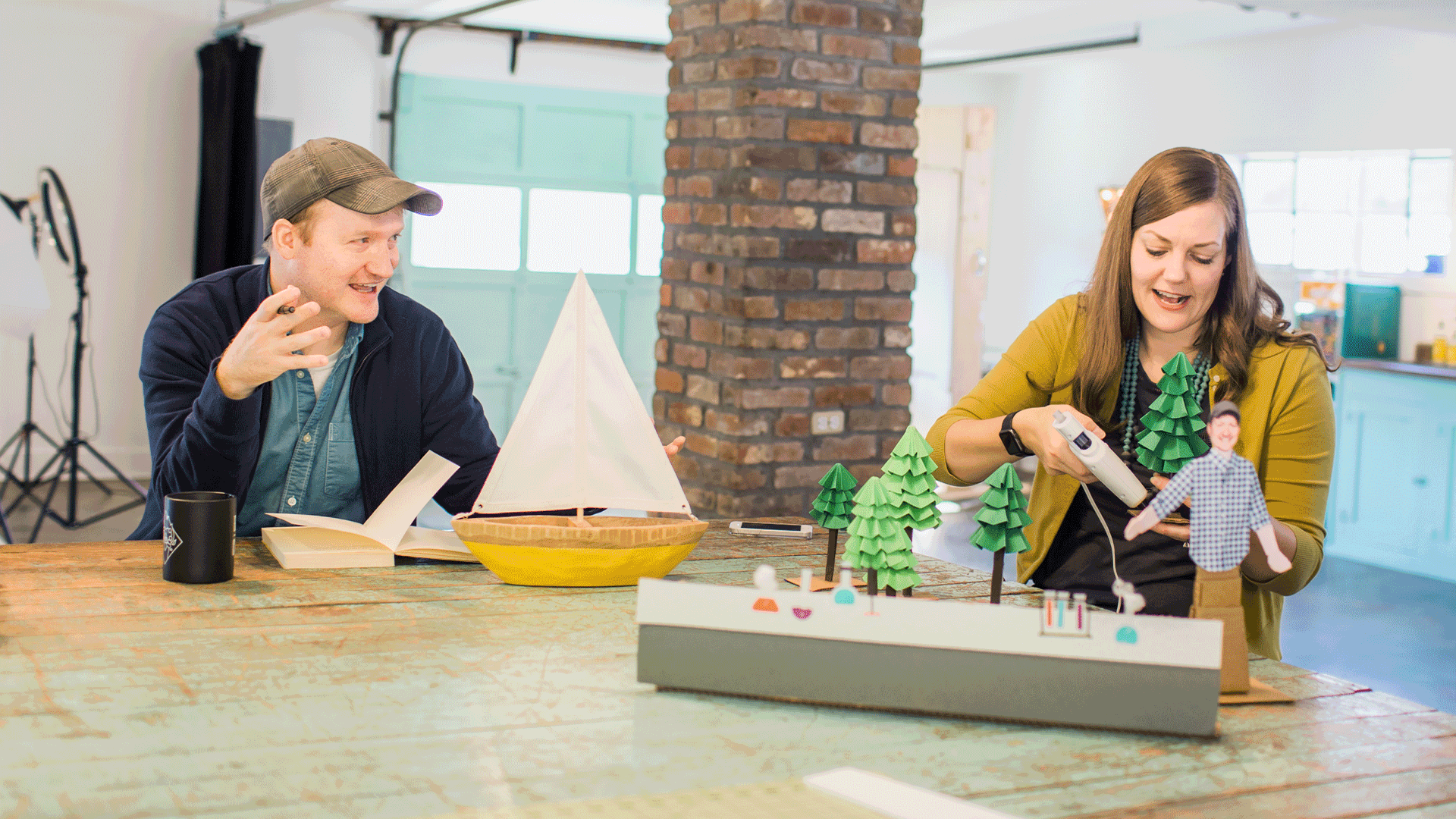
Your wife is the co-author of Fail-A-Bration, and you do quite a bit of work together. What are some of the benefits of working with your significant other?
My key collaborator is my wife Kristi. She is an artist, painter, photographer, and designer, so we get to work together on so much of what we do, especially our books. Our marriage is definitely a collaboration, but our books have become even more so, an expression of our own love for each other by working together. It’s been a really cool discovery for us to realize how much our individual talents serve the other’s. I draw and sketch and write, and she’s this brilliant painter and designer. The Fail-A-Bration book was made out of taking a lot of my illustrations and then creating paper sculptures out of them, or finding trash from our bin, and realizing, Oh, that would make the kids’ boots, and just elevating what I was doing in a way that I wouldn’t have done otherwise. That’s what great collaboration is. I think I’m learning how to collaborate by being right in the middle of it.
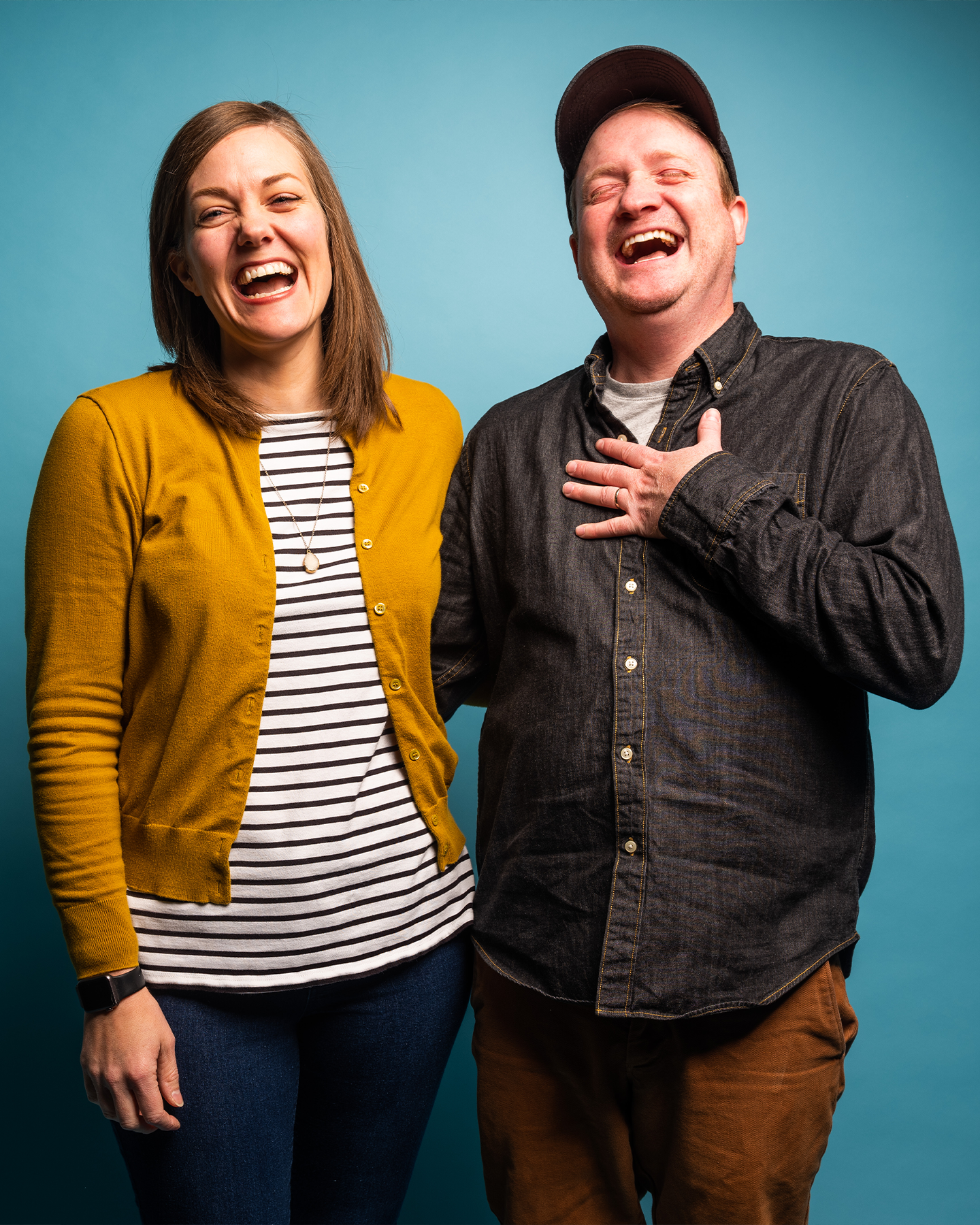
You often encourage people to be joy rebels. Could you describe what a joy rebel is?
Yeah! When we were making things online for SoulPancake [Rainn Wilson’s media company], many people would refer to it as, “It’s just so positive; it’s just so happy.” And I understood they meant it as a compliment, and it meant they enjoyed it. But that felt to me like the kind of thing you’d say about a Hallmark card or about something that doesn’t seem like it would actually be able to live in the real world. Joy too often is talked about in terms that seem soft and fluffy. When it is actually the most rebellious thing, it is able to exist even where happiness is not. It is a thing that can defy math. Joy can create more joy and create more joy—it’s generative in that way. A joy rebel is somebody who is aware of the pain in the world, is aware of the difficulties and the challenges, but also has a vision for how things could be and should be.
I heard Frank Oz describe the work of Jim Henson and the Muppets as “affectionate anarchy,” and I love that as well. That contrast of realizing that some of these things that add hope and life and color to the world are not kids’ things. They are actually quite dangerous. And we need them. We need people to gravitate towards them, instead of, Ah, it’s just joy. It’s just affection. No, this is the good stuff. This is what we all long for and deserve and should be creating for each other.
When [The Great Discontent editor-in-chief] Sheharazad connected us, in her email she mentioned that Hugh [Weber, the former TGD publisher who passed away in 2023] had gone to see you speak and given you one of his “I’ve Seen the Future” pins. Could you recount that connection?
Oh man, it’s right here [holds pin up to camera]. I was doing an event in Chicago, and this guy comes up to me. He’s wearing a cardigan and he had an envelope, and he grabs my hands and he goes, “Come here. I have something to tell you.” I was like, What’s happening? He says, “Here’s this pin.” And it said, I’ve Seen the Future. “You have it there.” And I was like, I’m listening. It is the best possible way to make a new best friend. He explained to me the story of the I’ve Seen the Future pin: “If you had gone to the General Motors exhibit at the World’s Fair in 1940 in New York, you would’ve been handed this pin. And I’ve been collecting these. There’s just a limited amount, and I’m giving these to people, key people who I believe in, and I wanted you to have this.” I had known him for all of three minutes and was immediately crying. I felt seen and celebrated and invited into something that I wanted to be part of, but didn’t know I could or that it was even possible. We instantly became close—that connection. Not to diminish that moment between us, but I’ve since learned that he had many, many moments with many people with that same sort of deep, profound connection because that’s just the gift of a human he was.
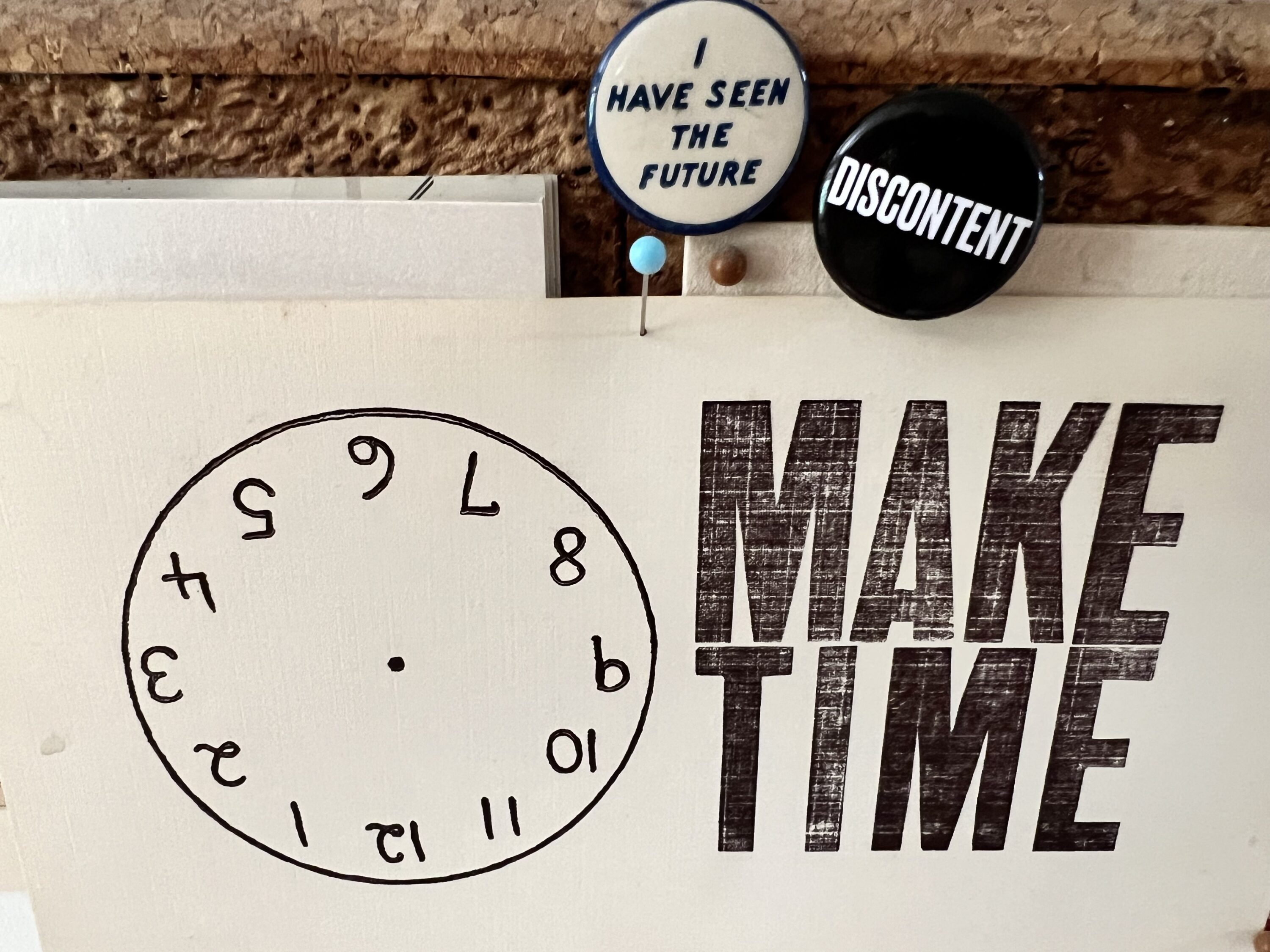
What does the phrase “I have seen the future” mean to you?
That phrase—I love the way in which at times humans have been so optimistic about the future. And I dislike how we’ve come to mock that and laugh at that, or think, Oh, it’s so silly what they thought the future would look like. To have somebody say, “I’ve seen the future,” as a visionary or as a leader in any way, gives everybody around you permission to hope again, permission to have vision again, permission to dream again. One of my picture books is The Fantastic Bureau of Imagination, and there are all these agents who are dreaming of things. And there’s a line that was for Hugh. One of the figments—they’re the agents that run the Bureau—writes this poem, it’s going to go out to remind everybody to dream. And he says, “We must be bold.” That was a note back to him. Hugh was a remarkable human being. I think about him every day, it’s no exaggeration. Because not only was he himself wildly creative, he was a champion of wild creativity and understood that it thrives best in community, and that it can seem like such a lonely thing to dream and create because at times it is. But community can feed creativity and creativity can feed community. And I think he was such a champion of all of those things and embodied that to such a degree that we’ll be feeling the ripple effects of the impact of his vision for the future for many, many years to come.
